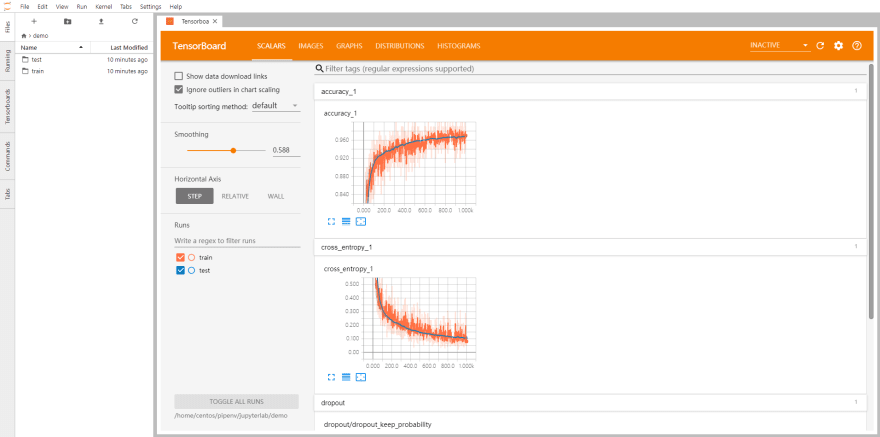

Jupyterlab docs code#
Code Console - Enables you to run code interactively in a kernel. Try Jupyter ( is a site for trying out the Jupyter Notebook, equipped with kernels for several different languages (Julia, R, C++, Scheme, Ruby) without installing anything.Terminal console - This is a JupyterLab Terminal extension equivalent to a Linux shell.To execute a command, click it in the list. View and use additional commands in the editor.One kernel session corresponds to one open notebook.

Manage kernel sessions that are currently running.View and manage files that are created or added (uploaded or downloaded) within the analysis itself, including the Jupyter notebooks (.Left-hand panel containing tabs that allow you to access some (or all) of the following functionalities:.Toolbar - Allows you to quickly perform the most common actions within a notebook, by clicking on an icon.Cell - A single section of a notebook where you can enter code, markdown or raw text.Notebook - The document that contains the code and outputs of an interactive analysis, as well as additional markdown or raw text that accompanies the code, but is not meant for execution.The main elements of the JupyterLab editor are: The editor screen showing a notebook and a terminal console open at the same time will look like this: Available programming languages and their versions might differ depending on the selected environment setup. When you open JupyterLab, you see the Launcher screen that allows you to select one of the available options:Ĭhoose one of the options in the Notebook section, depending on the programming language you want to use. ↳ Data Browser query: start by searching for an ID.↳ Data Browser query: multiple dataset query.↳ Data Browser query: start from an existing query.

↳ Data Browser query: start from scratch.↳ Data Browser query: start by searching through a dataset.↳ Data Browser query: start from an example query.


 0 kommentar(er)
0 kommentar(er)
